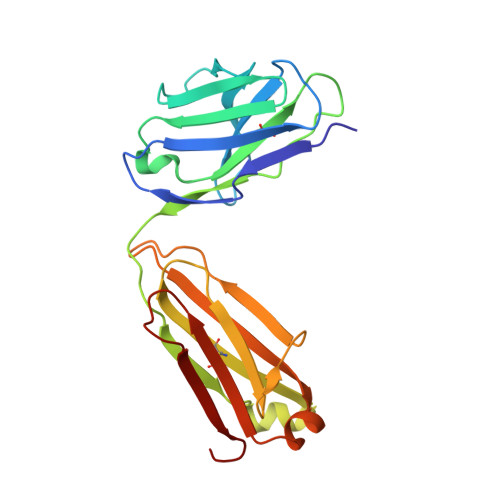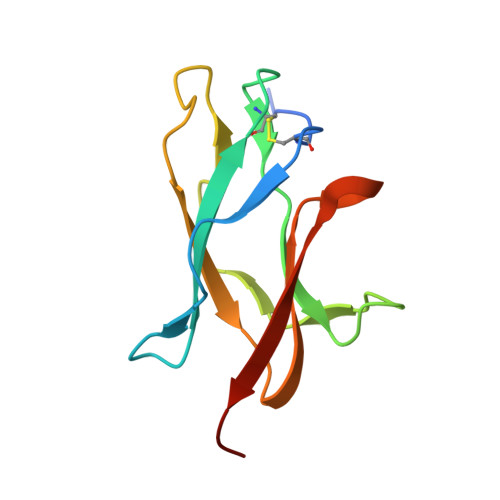Mechanism of differential Zika and dengue virus neutralization by a public antibody lineage targeting the DIII lateral ridge.
Zhao, H., Xu, L., Bombardi, R., Nargi, R., Deng, Z., Errico, J.M., Nelson, C.A., Dowd, K.A., Pierson, T.C., Crowe, J.E., Diamond, M.S., Fremont, D.H.(2020) J Exp Med 217
- PubMed: 31757867
- DOI: https://doi.org/10.1084/jem.20191792
- Primary Citation of Related Structures:
6PLK - PubMed Abstract:
We previously generated a panel of human monoclonal antibodies (mAbs) against Zika virus (ZIKV) and identified one, ZIKV-116, that shares germline usage with mAbs identified in multiple donors. Here we show that ZIKV-116 interferes with ZIKV infection at a post-cellular attachment step by blocking viral fusion with host membranes. ZIKV-116 recognizes the lateral ridge of envelope protein domain III, with one critical residue varying between the Asian and African strains responsible for differential binding affinity and neutralization potency (E393D). ZIKV-116 also binds to and cross-neutralizes some dengue virus serotype 1 (DENV1) strains, with genotype-dependent inhibition explained by variation in a domain II residue (R204K) that potentially modulates exposure of the distally located, partially cryptic epitope. The V-J reverted germline configuration of ZIKV-116 preferentially binds to and neutralizes an Asian ZIKV strain, suggesting that this epitope may optimally induce related B cell clonotypes. Overall, these studies provide a structural and molecular mechanism for a cross-reactive mAb that uniquely neutralizes ZIKV and DENV1.
Organizational Affiliation:
Department of Pathology & Immunology, Washington University School of Medicine, Saint Louis, MO.
















